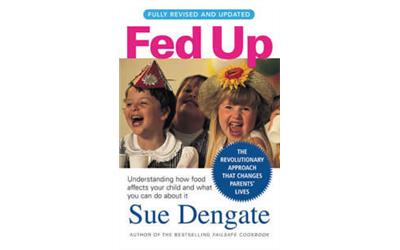Why change the menu for struggling learners

By Kathy Kuhl
When little Timothy* (name changed) gave me a big smile, I was surprised. When he hugged me, I was floored. Though I’d known him since his birth almost four years before, been to his home often, and regularly been hugged by his parents and sister as they greeted me, Timothy rarely even smiled at me. He’s certainly never run to greet me with open arms.
What made these social changes? Maturity? Therapy? No, diet made the difference.

I’m no expert on diet. I’m not writing to tell you to try one particular diet for your child. But parents of kids with learning or behavior challenges need to know that diet can dramatically affect a child.
(Everyone should consult a doctor before trying new diets, since there are complex issues and there may be serious illness involved. A dietician familiar with alternative diets can be a huge help.)
There are many misconceptions about diet. When my son was seven, experts in AD/HD whose work I read assured me that there was no clear scientific evidence that special diets would help my child.
It helped some kids. That didn’t mean it would help mine. (You can usually find an anecdote of almost anything helping somebody.) And since eliminating different ingredients can be a big hassle and expense, the experts didn’t recommend trying.
Besides, I was already pretty careful about what my kids ate. Once, when I let my second grader have a carton of red fruit punch and he did better than usual in gymnastics class that day, I remember thinking, “Red dye clearly doesn’t hurt him!” Little did I know.
I would never have read Sue Dengate’s Fed Up: Understanding How Food Affects Your Child and What You Can Do About It before I saw Timothy change. I know what helps one child may not help another, but Tim’s radical changes got my attention. I knew his parents had always been conscientious about diet. Tim was not raised on junk food!
Dengate’s book explains how she discovered that a diet could change her kids’ learning problems. Developed by the Royal Prince Alfred Hospital’s (RPAH) Allergy Unit in Sydney, Australia, the RPAH or Failsafe Diet has helped many kids and adults who are not allergic to certain foods, but don’t tolerate them well.
Her book explains how some chemicals build up in the body and don’t affect behavior for a few days. (So my son’s having a good class after drinking red punch proves nothing.) Dengate also explains how going off a chemical can cause a worsening of symptoms for a few days, before the improvement. To succeed, you need to plan ahead and learn from the RPAH and Sue Dengate’s websites. They also show you how to reintroduce these chemicals one at a time, in careful “challenges,” to determine which foods affect your child.
Back to Tim. He had been troubled for much of his life by eczema, so bad that his toes had become chronically cracked and bled. As he grew, so did his temper. His parents sought advice from more experienced parents, from pastors and doctors, but Tim’s temper grew worse. He’d regularly bang his head on the floor in fury.
In researching dietary links to temper tantrums, his mother discovered Sue Dengate’s summary of work by the RPAH that showed that 75% of “behaviorally disordered” children had a sensitivity to salicylates (a natural chemical occurring in fruits and vegetables). Just to see if it made a difference, she made the simple move of cutting out apples, grapes, cranberries, broccoli, and spices from the family’s diet. Within two weeks, the eczema on Tim’s legs had become simply rough skin, the cracks in his toes had healed, he largely stopped banging his head, and he returned to sleeping through the night without awakening and screaming. At that point, after consulting a dietitian, they embarked on the full RPAH elimination diet and saw continued improvement.
What’s in this diet? Well, what’s out of this diet are additives and three naturally occurring chemicals: salicylates, amines, and glutamates. Sue Dengate explains these clearly. Her style is easy to read.
Salicylates are naturally in many fruits and vegetables. For most people, these foods are fine and healthful. But for some, these natural ingredients are harmful. Amines also occur in some fruits, but mostly as proteins break down, as in cheese. Amines also form in any meats, fish, or leftovers that have been in the refrigerator for a couple days. Glutamates are natural flavor enhancers. They are often added to processed foods (even “all-natural” ones), but also occur naturally in some foods such as green peas.
Your child may not be sensitive to these chemicals. (Timothy’s parents and two siblings don’t share his sensitivities.) But if you’ve ever even suspected that food might contribute to your child’s difficulties, a change in diet is worth investigating.
Dengate also discusses sensitivities to gluten and dairy, and other factors. (She doesn’t assume this diet solves everything, and includes non-dietary causes of learning and behavior problems.) She explains how to try an elimination diet, and provides shopping lists, practical advice, and recipes. So your family could try eliminating these chemicals from your diet for a few weeks and look for improvement.
I’m not recommending the RPAH or Failsafe diet in particular, but I wish I had understood all this when I had kids at home. It sounded too hard, too uncertain, too offbeat for me to be willing to risk the time and expense. I wish I’d had this book.
In 2010, at a conference on gifted children with learning disabilities, I met a mother from Chicago with two kids with so many special needs that she had printed business cards with a list of her kids’ diagnoses on the back. She told me she’d been skeptical about changing their diet, but tried eliminating a few foods (gluten and dairy, I believe). She told her kids that they would only have to stick to it for a month. But they saw immediate improvement. After three weeks, her daughter said, “Mom, do we have to go back to regular food next week? Can we please stay on this diet?” And they did.
As I said, I know very little about diet. I’ve learned from Sue Dengate, from Beverly Seng, and from a talk by Dianne Craft. If your child is struggling with learning and behavior problems, it’s worth investing some time, money, and effort–even for us busy homeschooling moms–to see if what your children eat can be affecting their learning. Reading Sue Dengate’s book is a good introduction to exploring dietary issues, so I recommend it.
Have you seen diet improve your child’s behavior? Please answer in the comment section below:


Thank you for the article and links. http://www.feingold.org was our family’s link to simple support for sorting out food sensitivities that caused OCD and behavioral issues for our children. Now I see across generations that extreme sensitivity has run in our family. Deal with serious behavioral issues and drug costs & side effects –or deal with making simple, conscious choices about our food. We opted for the latter, with great success! In my professional life, I ask parents to seriously consider the quality of their child’s sleep, and diet, when beginning to address academic and behavior concerns.
Thanks for writing, Susan. Sleep and diet are two important factors to consider.